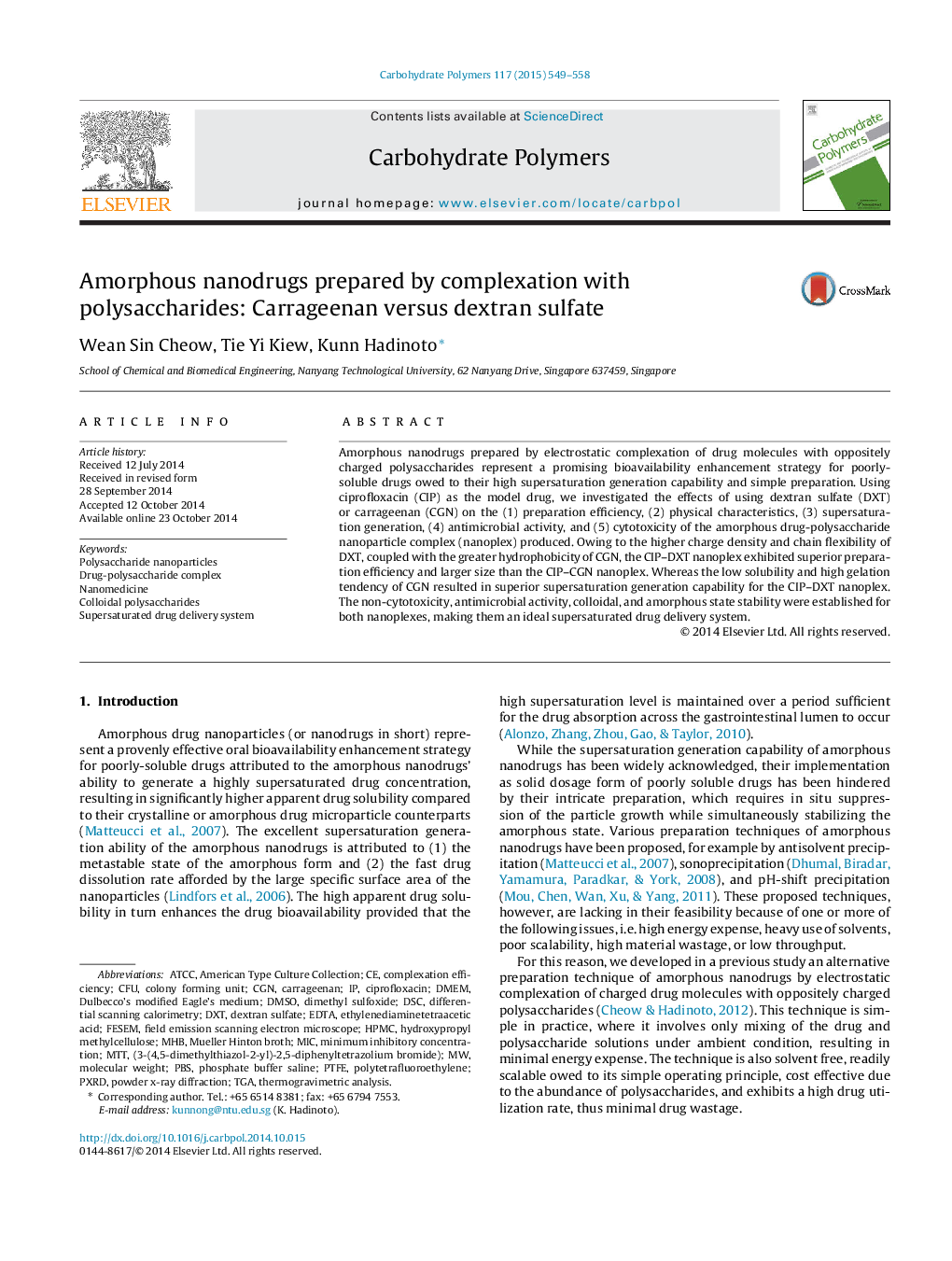| Article ID | Journal | Published Year | Pages | File Type |
|---|---|---|---|---|
| 7789864 | Carbohydrate Polymers | 2015 | 10 Pages |
Abstract
Amorphous nanodrugs prepared by electrostatic complexation of drug molecules with oppositely charged polysaccharides represent a promising bioavailability enhancement strategy for poorly-soluble drugs owed to their high supersaturation generation capability and simple preparation. Using ciprofloxacin (CIP) as the model drug, we investigated the effects of using dextran sulfate (DXT) or carrageenan (CGN) on the (1) preparation efficiency, (2) physical characteristics, (3) supersaturation generation, (4) antimicrobial activity, and (5) cytotoxicity of the amorphous drug-polysaccharide nanoparticle complex (nanoplex) produced. Owing to the higher charge density and chain flexibility of DXT, coupled with the greater hydrophobicity of CGN, the CIP-DXT nanoplex exhibited superior preparation efficiency and larger size than the CIP-CGN nanoplex. Whereas the low solubility and high gelation tendency of CGN resulted in superior supersaturation generation capability for the CIP-DXT nanoplex. The non-cytotoxicity, antimicrobial activity, colloidal, and amorphous state stability were established for both nanoplexes, making them an ideal supersaturated drug delivery system.
Keywords
DSCHPMCPBSCFUCGNPolysaccharide nanoparticlesDMEMATCCPTFEMICPXRDFESEMTGADXT(3-(4,5-dimethylthiazol-2-yl)-2,5-diphenyltetrazolium bromide)DMSODulbecco's modified Eagle's mediumMHbMTTEDTAEthylenediaminetetraacetic acidcomplexation efficiencyThermogravimetric analysisMinimum inhibitory concentrationDimethyl sulfoxideDextran sulfateCiprofloxacinphosphate buffer salineAmerican Type Culture CollectionMueller Hinton BrothField Emission Scanning Electron MicroscopeNanomedicineHydroxypropyl methylcelluloseMolecular weightPowder X-Ray DiffractionpolytetrafluoroethyleneCarrageenanDifferential scanning calorimetrycolony forming unit
Related Topics
Physical Sciences and Engineering
Chemistry
Organic Chemistry
Authors
Wean Sin Cheow, Tie Yi Kiew, Kunn Hadinoto,
